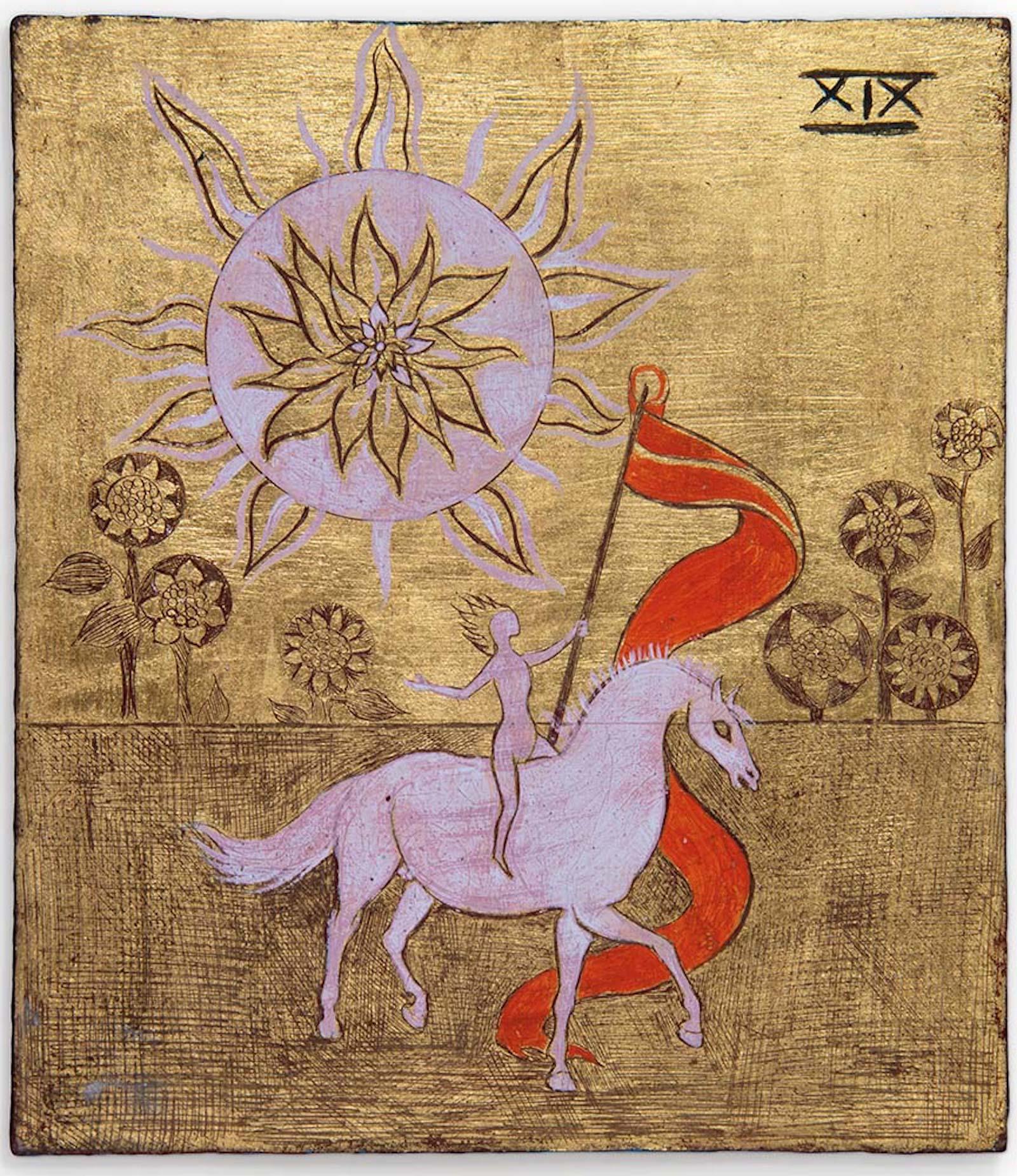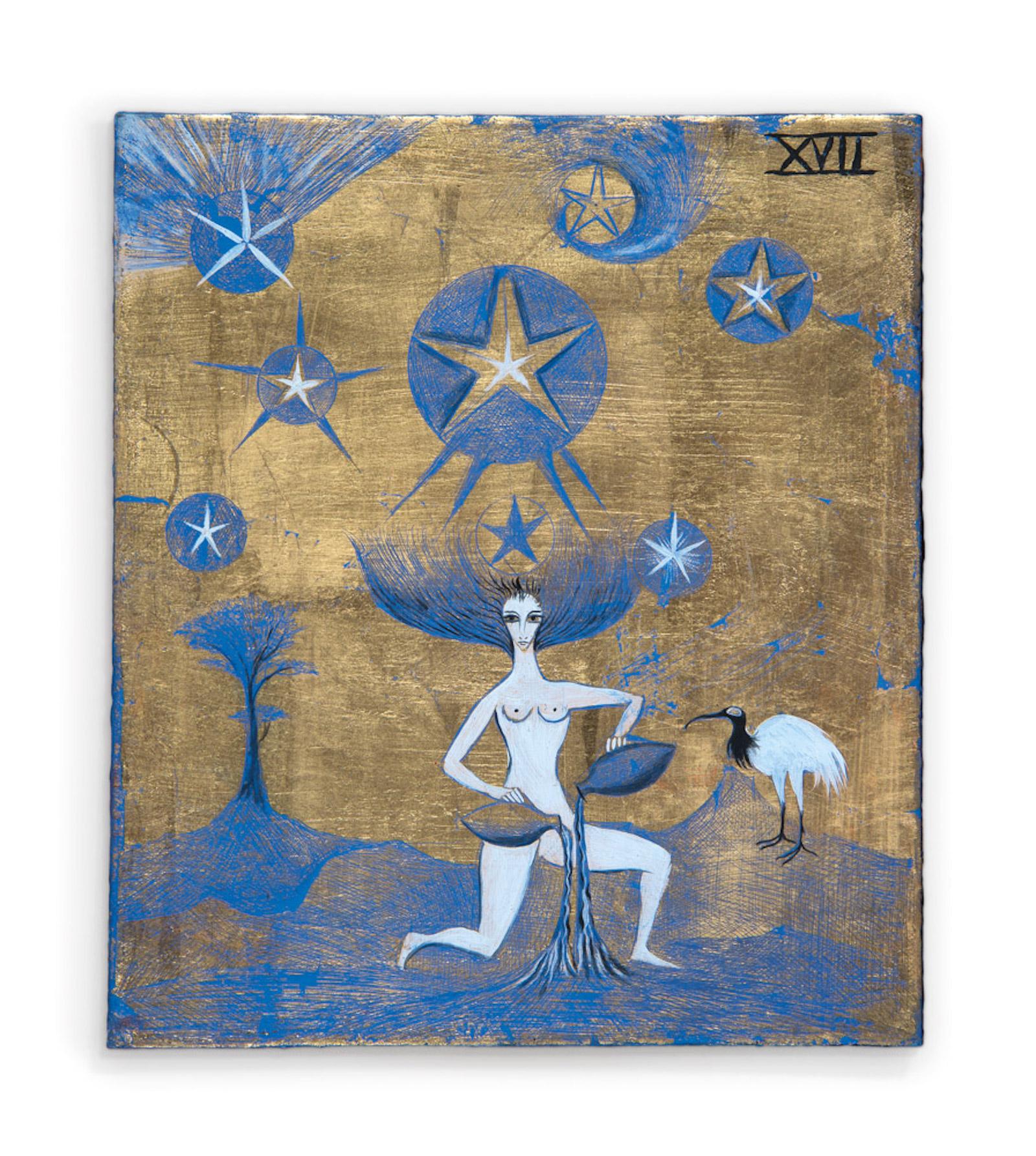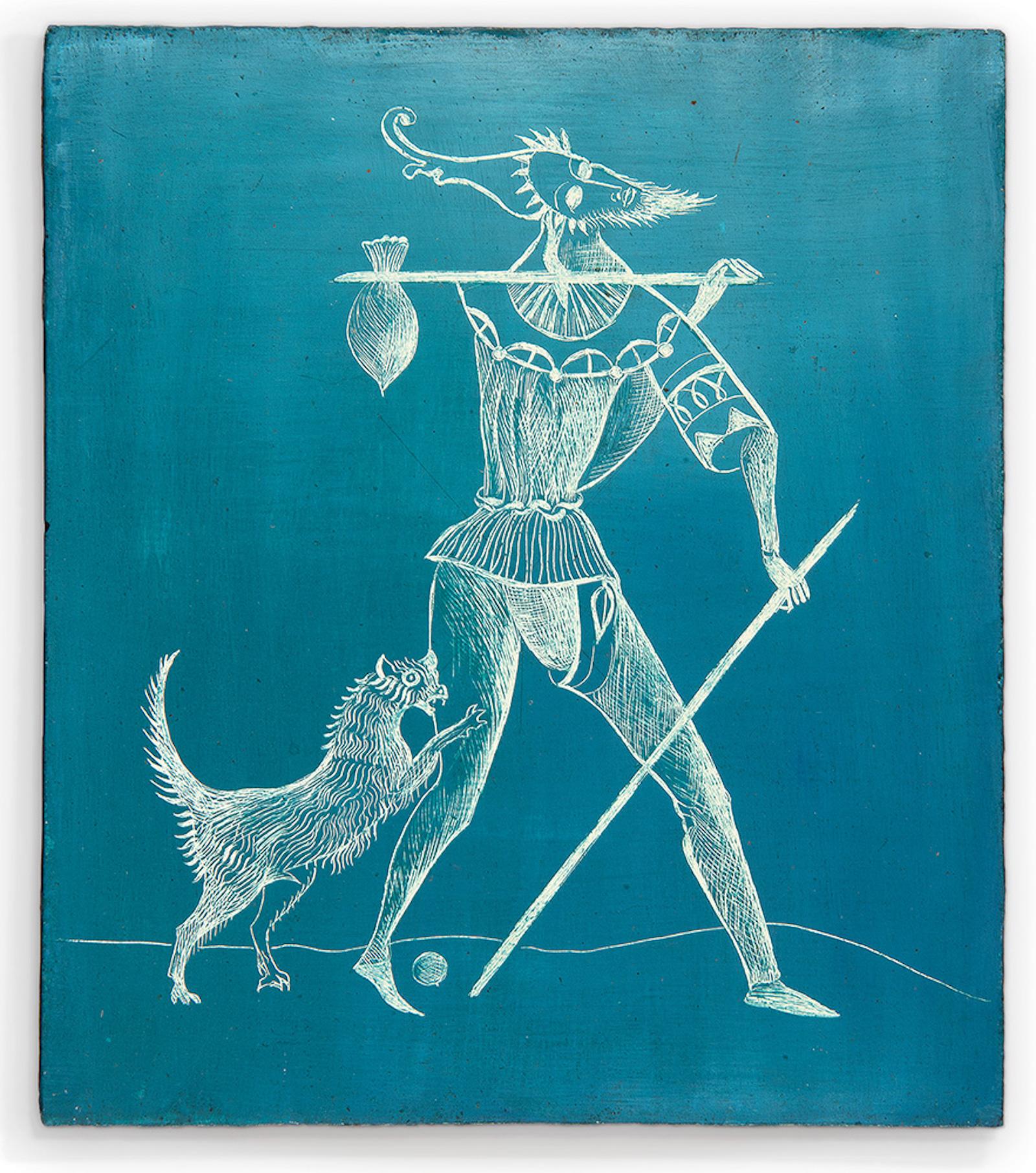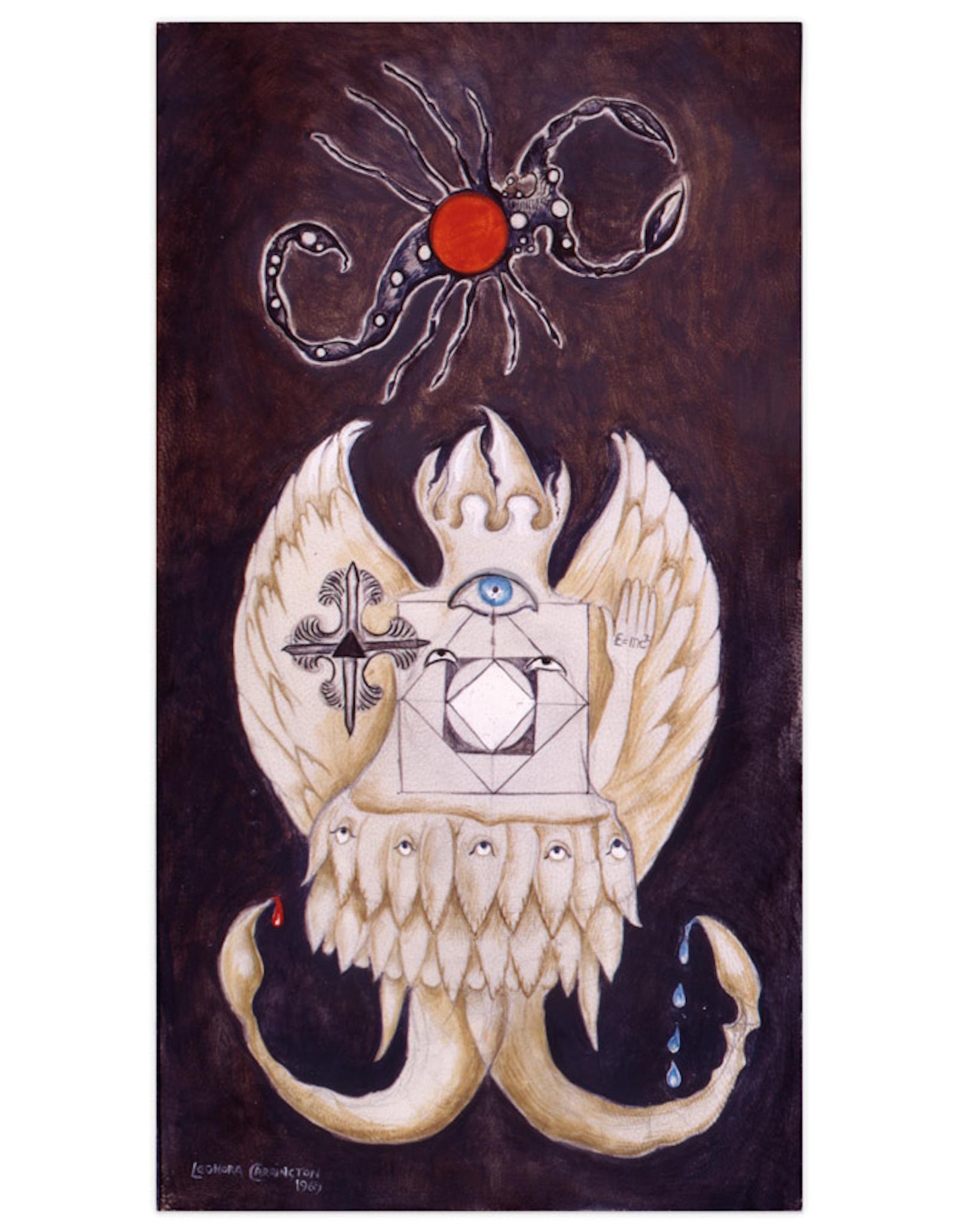In 2021, Fulgur Press published The Tarot of Leonora Carrington, a book that presents facsimiles of the unique deck and serves as yet another portal into the artist’s enigmatic imagination.
Devotees of Carrington will hardly be surprised to learn of her tarot. Her oeuvre—composed of paintings, fiction, theatrical costumes, and more—paraded strange, indelible marvels and embodied her interests in mythology, alchemy, and the occult. These interests stemmed from a lifelong following of mystical traditions, which art historian Susan Aberth and curator Tere Arcq (who encountered the deck during research for a 2018 Carrington retrospective) diligently trace in an essay featured in the new book.


































